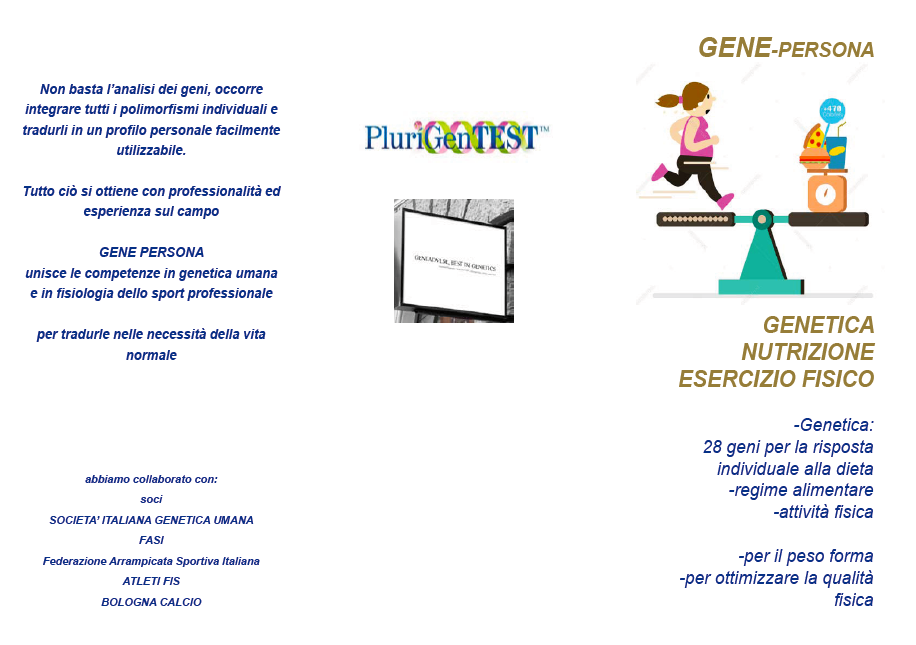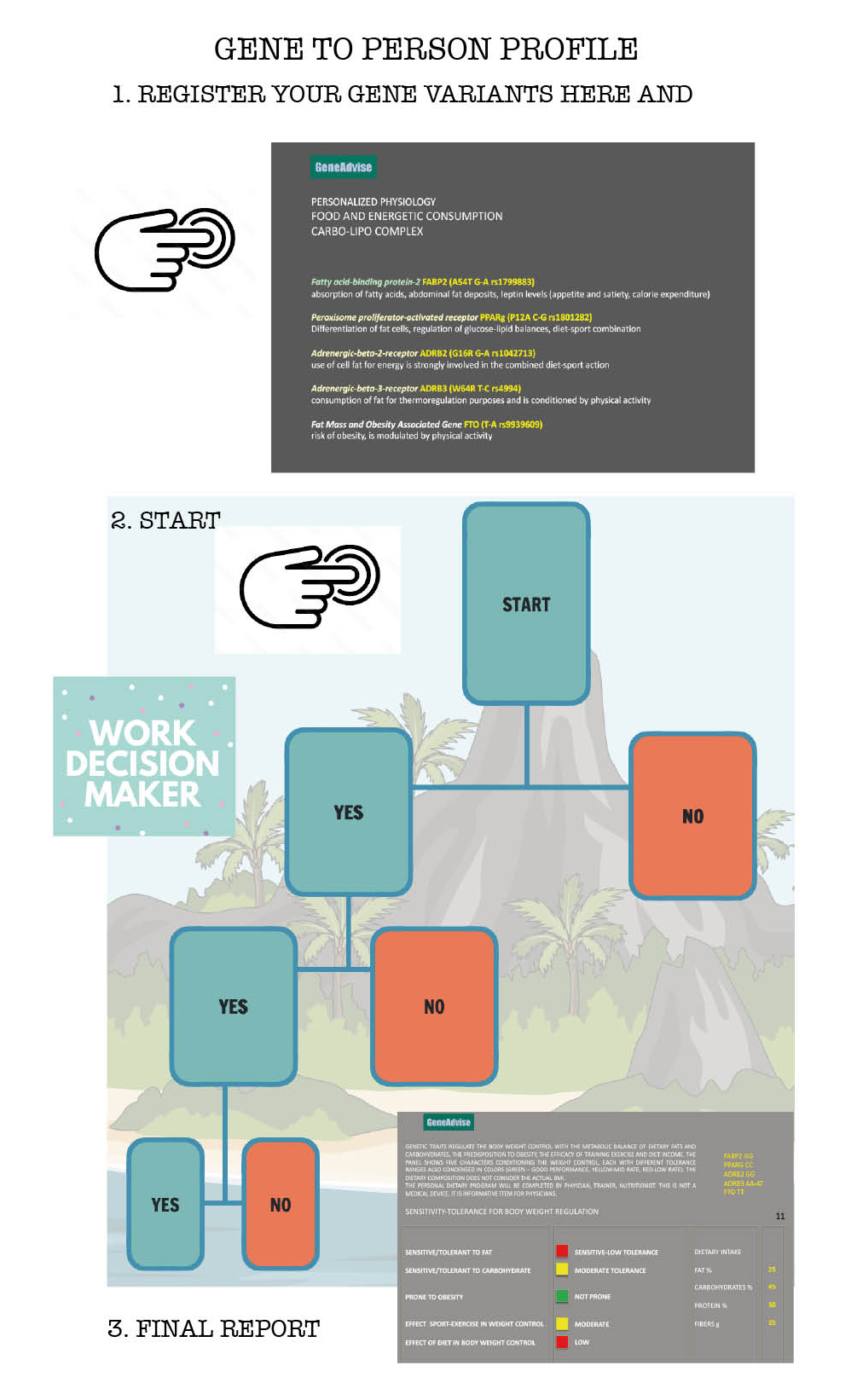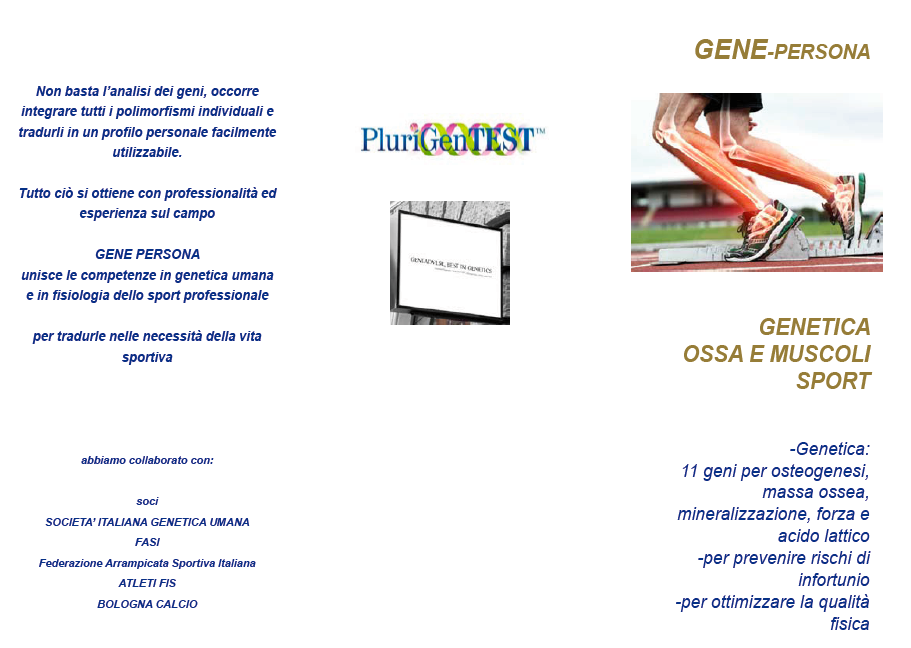


Nutrigenetics: science that studies the effects of genetic variations on the response to nutrients, with the aim of identifying the foods most suitable for a particular person.
Nutrigenomics: science that studies the effects of nutrients on the expression of genes, i.e. how nutrients act directly at the DNA level and therefore at the level of the proteome and metabolome. Nutriepigenomics: science that studies specific nutritional interventions capable of favorably regressing epigenetic alterations.
Dietary lifestyle is a fundamental determinant of risk for the most widespread chronic diseases in the Western world: cardiovascular, obesity, diabetes and many cancers. There are many guidelines, based on large-scale epidemiological studies, aimed at the general population or homogeneous groups of patients who share the same condition of possible risk or pathology. It is also known that the individual response to the same type of diet is variable, both in terms of clinical outcomes and the modulation of the risk of disease due to psychosocial, cultural and economic causes, and for the expected, much less well-known, complex interactions, between genetic and environmental factors, certainly not easily qualified in a reliable way today.
The availability of new technologies and ever-increasing knowledge in the “omics” field have led to the hypothesis of a possible evolution towards personalized nutrition. The molecular analysis of the genome and the metabolome has in fact highlighted numerous variants differently associated with dietary factors, and in this sense potentially attributable to susceptibility to many chronic diseases.
The enormous potential of these developments does not currently correspond to results validated in the clinical field, despite being highly suggestive in terms of pathophysiological bases. The examples of genetic variants involved in the risk of disease, through interaction with diet, are numerous and concern many highly prevalent conditions, for example hypercholesterolemia, hypertriglyceridemia, breast cancer, osteoporosis, metabolic syndrome, type 2 diabetes, obesity, non-alcoholic fatty liver disease. In the context of glucose metabolism, approximately 100 genetic variants have been identified for type 2 diabetes and over 40 for type 1, capable of interacting with the intake of both carbohydrates and fibers to weakly modulate the risk of the disease. Genetic studies have also highlighted 97 loci relating to the accumulation of adipose tissue and another 49 relating to fat distribution. The variants of the first so-called “obesity gene” identified, FTO (fat mass and obesity associated), are closely associated with the increase in BMI (body mass index), especially in the presence of diets rich in fats and proteins. A common polymorphism of the PLIN (perilipin) gene, involved in the regulation of fat accumulation in adipocytes, can reduce the risk of obesity in association with a diet rich in carbohydrates but increase it in case of reduced intake8.
These data help to explain the well-known, and expected, poor results of the usual generalized approach (one-size fits all) to reducing body weight. Important methodological-linguistic note: the use of the term association is not accidental: in epidemiology and statistics it indicates a substantially descriptive relationship between “causes” and “effects” but does not explain whether one phenomenon is the cause of the other: that is, it indicates a possible line of research.
Many variants are improperly used in predictive panels of carbo-lipidic balance, toxicity, bone metabolism, sports performance due to defects in data collection, selection of reference population, frequency in the general population and selective effects.
A drastic reduction in variants allows to create two types of panels.
GENE TO PERSON - GENETICS - NUTRITION - PHYSICAL EXERCISE
GENE TO PERSON studies genes that regulate the accumulation and consumption of fats and sugars. The differences in each individual's genes are revealed by a single test.
GENE TO PERSON reveals whether a person is predisposed to accumulate fats and sugars consumed through diet or whether he is able to consume them quickly.
GENE TO PERSON reveals how food control and physical activity are combined for weight control, as well as what categories of foods and what intensity of exercise.
What are the functions of the GENE TO PERSON genes?
The absorption of fatty acids, the increase in abdominal fat deposits, the action of hormones that promote weight loss. The formation of fat cells, the regulation of glucose-fat balances, the use of cell fat for energy purposes, the consumption of fat for thermoregulation purposes, the risk of obesity, the weight gain with saturated fat intake, the combined diet-exercise action

ONLINE FAST SCORE OF FIVE GENES FOR YOUR DIET CHOICE
GENE TO PERSON DECISION MAKER
The interactive way for your Gene to Person Profile. Follow the two main steps: 1. Download the variant sheet touching the below icon and register your variant aplotype. 2. Keep the variant sheet at a glance, touch the "start" icon and begin the choiche of variants. 3. The last step will show you your metabolic panel.

GENE TO PERSON - GENETICS - BONES AND MUSCLES - SPORT
GENE TO PERSON studies 11 genes that regulate osteogenesis, bone mass, bone mineralization; the muscular predisposition to pure or resistant strength. The differences in each individual's genes are revealed by a single test.
GENE TO PERSON reveals whether a person is predisposed to osteo-tendon weakness and poor lactic acid disposal.
GENE TO PERSON allows you to prepare a diet suited to your personal characteristics and the quality and intensity of physical exercise.




